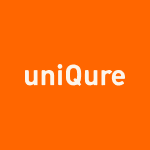uniQure Q4 2022 Earnings Report
Key Takeaways
uniQure had a strong ending to 2022 with the approval of the world’s first gene therapy for hemophilia B. The company is working to advance AMT-130 and preparing for the initiation of two new Phase I/II studies in refractory temporal lobe epilepsy and SOD1-ALS.
Achieved U.S. and European Commission marketing approvals of first and only gene therapy for adults with hemophilia B
Advancing development of AMT-130 for patients with Huntington’s disease – clinical update from U.S. Phase I/II trial expected in second quarter 2023
Hosted virtual investor event featuring AMT-260 in refractory temporal lobe epilepsy - expected to enter clinical development in second half of 2023
Expanded pipeline with in-licensing of AMT-162 for SOD1 ALS - plans to initiate a Phase I/II clinical trial in the second half of 2023
uniQure
uniQure
Forward Guidance
uniQure provided forward-looking statements regarding their clinical trials and regulatory submissions.
Positive Outlook
- AMT-130 clinical trial for Huntington’s Disease will begin enrollment in the U.S. in the second half of 2023
- The Company will announce one to two-years of follow up data from the U.S. Phase I/II clinical study of AMT-130 in the second quarter of 2023
- Clinical data from the lower-dose cohort for AMT-130 is expected to be presented in the second half of 2023
- The Company will submit an investigational new drug application for Fabry disease in 2023
- The company will initiate a Phase I/II clinical study of AMT-162 for the treatment of ALS in the second half of 2023
Challenges Ahead
- Risks associated with the regulatory approval and commercial launch of HEMGENIX®
- Risks associated with our clinical trial for Huntington’s disease
- Impact of financial and geopolitical events on our Company and the wider economy and health care system
- Risks associated with our Commercialization and License Agreement with CSL Behring
- Risks associated with our clinical development activities, clinical results, collaboration arrangements, regulatory oversight, product commercialization and intellectual property claims
